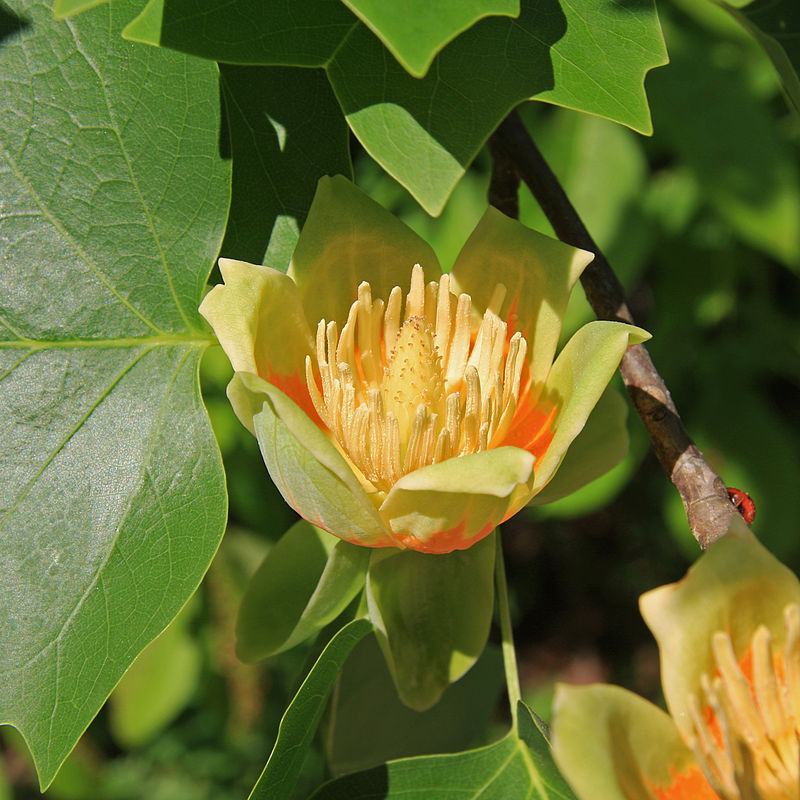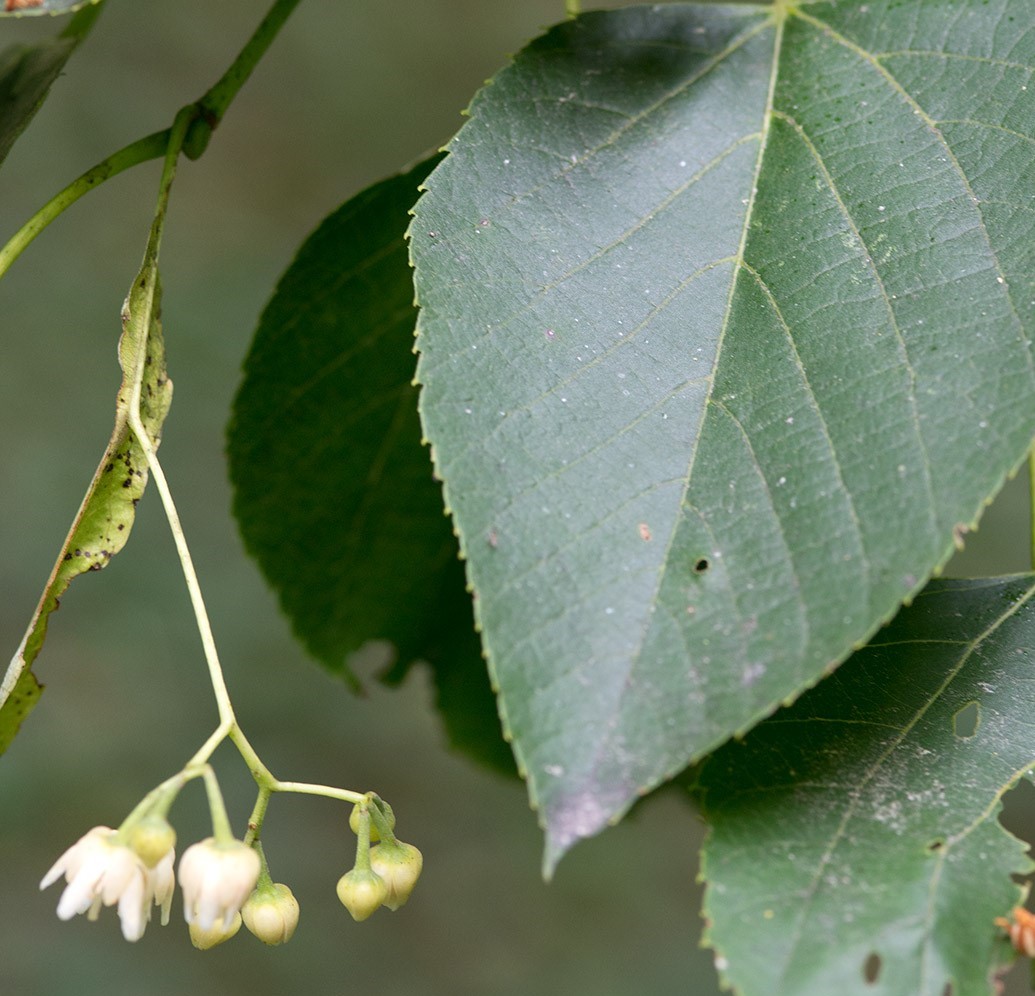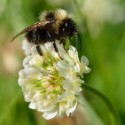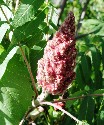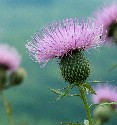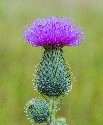
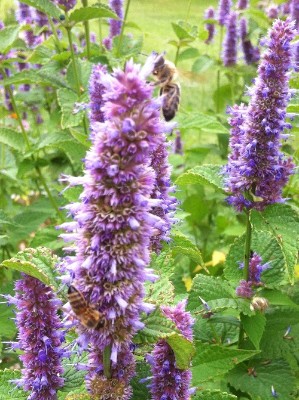
The Magic of Honey
Bees are vegetarians! They take nectar from flowers and turn it into honey.
They need a protein source too: pollen. Other hymentoptera (like wasps) have more...
shall we say... gruesome ways of getting proteins. But not bees!
It takes about 20 bees to bring in 1 gram of
nectar (that's like 3 big raindrops). But wait! Most nectar is sugar plus quite a bit of water...Bees work incredibly hard to turn nectar into honey.
And just to sweeten the deal, Chickabuzz Honey is harvested seasonally
in small batches. I don't want to miss out on the light delight of Spring honey, on the darker summer
honey, or on the nearly-caramel Fall honey.
In Ohio, late spring/early summer honey may feature nectar from
dandelion,
tulip tree,
black locust, or
basswood.
Every year the contributions from each source are different, so every batch is different...
Mid summer honey features nectar from clover,
sumac, both a
small thistle and a
large thistle, or some
black raspberry and blackberry if there are enough flowers around. And if the area
has any substantial plantings of a single variety (see here and
here) of sage, lavender, mint, coneflower, anise hyssop, or
sunflowers, you might be able to detect some of that flavor. I planted a sunflower patch
that was 20x30' and I got some sunflower honey! It was very strong, unlike most store honeys...
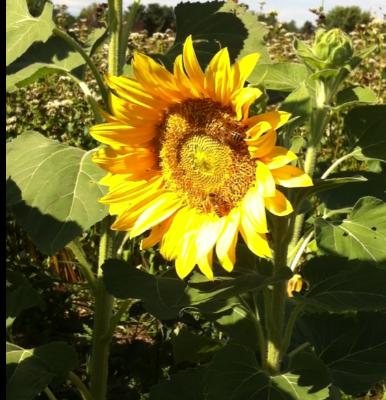
Fall honey is often darker and is from certain species of
goldenrod and
white aster.
The amount of fall honey available depends a lot on the amount of rain that fell
through the summer, and on not getting too much fall rain.
So it's not every year that we get the dark fall honey that crystallizes so readily.
It's a treat!
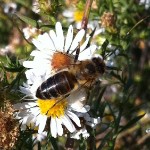
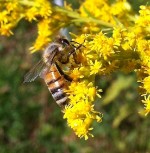
Honey is a miracle - which is why the bees make it
Why do bees work so hard to convert the nectar (often 1 part sugar to 3 parts water) to honey (4 parts sugar to 1 part water, or 80%+ sugar? It is incredibly energy intensive for the bees. Bees remove the water from honey by stretching the nectar drops into a very thin layer, and by whole-hive ventilation to keep the humidity down.
But why do all this work? Because sugary liquids can be consumed by yeasts - leaving nothing good behind (for bees anyways; people who like beer and wine would disagree!).
Bees that consume fermenting honey may not survive well over the winter,
because they end up with fecal matter that must be discharged, and... sometimes they can't go!
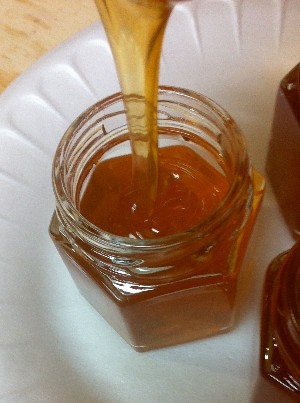
In fact, honey is so antibacterial, it is being used in hospitals for burn treatment as an antibacterial coating. We use it to soothe a sore throat.
Tips on getting honey
When honey supers are on, take care that sugar syrup is not getting into them. Clearly, never feed sugar water when a colony has honey supers on. But there are some insidious ways sugar water could still get into a honey-producing hive.
If a strong colony needs fed, and there is still 3-4 weeks until the honey flow, then you should be fine. Feed over the course of 1 week (1 quart a day, or 1 gallon every 3 days). Check again to be sure the colony has put on enough stores - 20% of the volume of the brood chamber should be nectar or honey. Then wait 2 weeks before putting supers back on.
Take care to never open feed (just don't do it ever anyways), to prevent weak colonies that are being fed from being robbed.
Our customers want honey from nectar, not sugar syrup. Honey sourced from bees fed sugar water is fraudulent.
- To get the most honey, you need the following:
- Lots of bees (don't raise your bees on the honey flow)
- Space to store the nectar that is NOT the broodnest (drawn comb in honey supers)
- A long enough flow to fill the comb AND to provide nectar for making the wax cappings
- To get the most honey WITHOUT starving your bees:
- In spring, check there are 4 frames or so of honey left, and if not, then feed either 2:1 sugar syrup during a warm stretch, or a solid sugar block.
- For a new hive, the window for comb building without additional feeding is June-July. In Ohio, the August flow usually isn't strong enough to trigger comb building, and in September the cold weather can start. A strong colony with a nectar flow will draw out at least one super.
- No nectar flow for comb drawing, but temps are warm enough? No problem. Feed with undrawn honey supers on and then extract that honey and label as "no sale". And then don't sell it. Next year, or that same fall even, you will have drawn comb for honey production.
- In summer, check that the outer frames and the comb just above the brood has honey AND nectar. If not, it's a dearth, and if you feed, they will be able to stay strong for the fall flow.
- Since I run alternative hives, I aim the same volume with honey as there are bees. In a long hive or top bar hive, if bees cover 6 bars in October, I want to see 6 full bars of honey past the area they occupy. In a Dadant deep, if I see a cluster covering 5 frames in the center, and the outer 2-3 frames (on both sides) are honey, then they will be all set.
- Be sure to evaluate fall stores not just in terms of winter needs, but also in terms of fuel necessary to build the population of bees in spring.
- To get the most honey WITHOUT LOSING your bees to swarming:
- Bees see capped honey as a "honey wall" - or rather a ceiling. If the space above the brood nest is only capped honey, they may not register a honey super above that. Keep brood directly below honey supers, and the honey stores in the brood box towards the side. Note that this means supers on in August can result in little or no honey being stored in the top deep; you'll have to manage the bees and the boxes to prevent that. See my Fall page for more about this danger.
- Adding at least 25% more space to store nectar in the brood nest - with drawn comb - works to prevent swarming. This isn't necessary if you have drawn honey supers.
- Adding undrawn foundation for space only works when the space added is at least 25% of the total volume of the hive. So, for 20 frames, that's 5 frames of undrawn foundation. I would position those frames at positions 2-6 for best results.
- Removing the queen (or half the frames and bees) works, and cutting swarm cells does not. Once the bees have "decided" it's time to swarm, only simulating a swarm or massively perturbing the hive will reset their priorities. This will usually get in the way of making honey.

